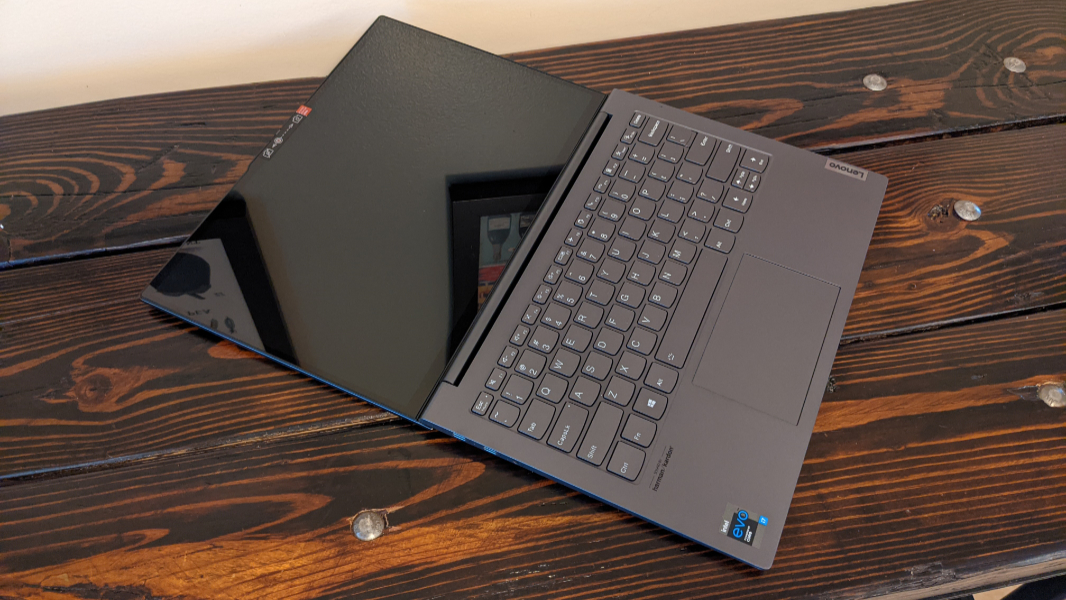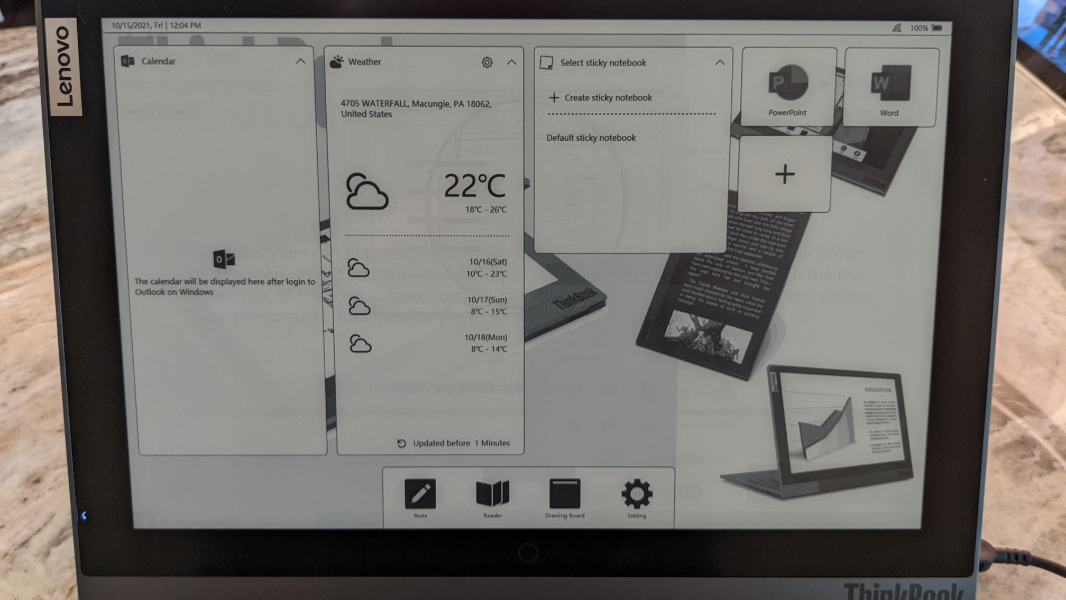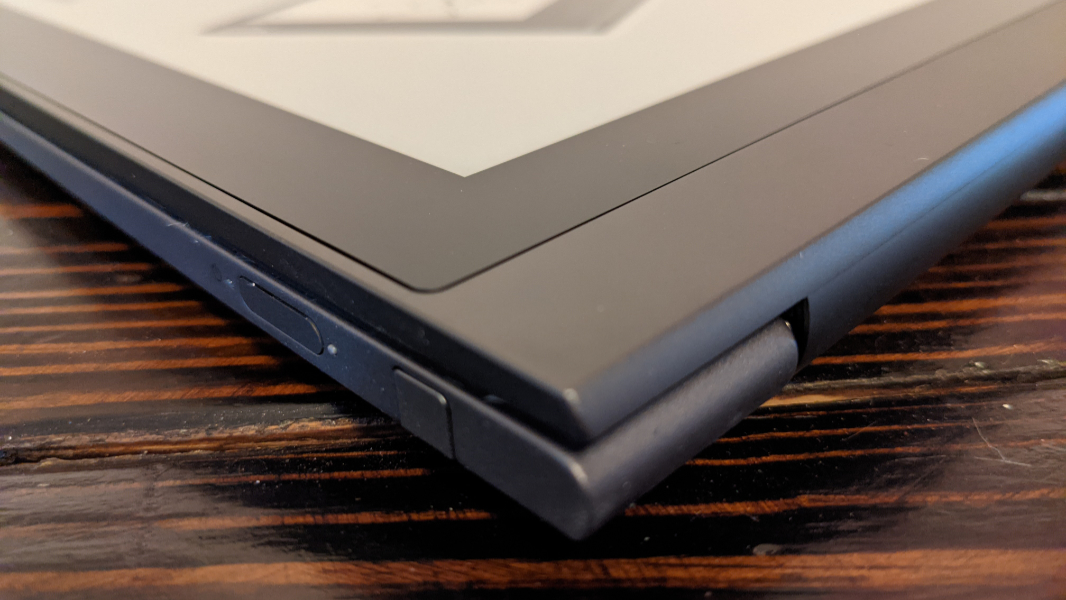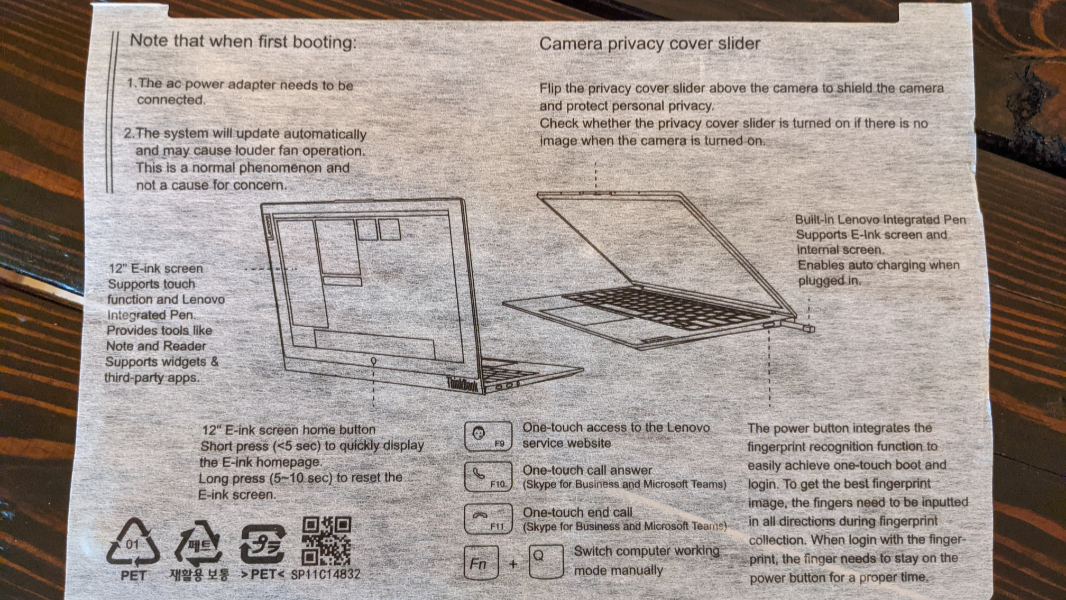Lenovo ThinkBook Plus Gen 2 First Impressions
- Paul Thurrott
- Oct 15, 2021
-
6

Well, you gotta give Lenovo an “A” for effort: I’m not aware of any PC maker that experiments so often with new form factors. Case in point: the new ThinkBook Plus, which combines a traditional 13.3-inch Ultrabook with a 12-inch E-Ink display on the outside of the display lid. Because of course it does.
I know. You have a lot of questions. But let’s start with the “what.”
Windows Intelligence In Your Inbox
Sign up for our new free newsletter to get three time-saving tips each Friday — and get free copies of Paul Thurrott's Windows 11 and Windows 10 Field Guides (normally $9.99) as a special welcome gift!
"*" indicates required fields
The ThinkBook Plus is an Ultrabook, and for the most part, it’s a lot like other recent Ultrabooks. The internal components are as modern—and, dare I say, normal—-as one would expect of a mainstream 2021-era Ultrabook. It’s powered by a quad-core 11th-generation Intel Core i7-1130G7 or i7-1160G7 processor, 16 GB of LPDDR4x RAM, and 512 GB of PCIe-based SSD storage. So nothing out of the ordinary there: if you ignore the fact that there is a second display on the outside of the display lid, the ThinkBook Plus is quite ordinary and should perform nicely.

You’ll also find modern Wi-Fi 6 and Bluetooth 5.2 for connectivity. Audio driven by two downward-firing Harmon Kardon stereo speakers with Dolby Atmos capabilities. And four array microphones with both near- and far-field capabilities. Expansion duties are handled by two Thunderbolt 4/USB-C ports, both on the left.

But it is the two displays that will get all the attention. Obviously.
Inside the display lid—you know, in the normal place for a laptop display—is a bright and glossy 13.3-inch multitouch-capable IPS panel with a WQXGA (2560 x 1600) resolution and Dolby Vision capabilities. Again, perfectly normal.

And on the outside, there is an oddity, an interloper: a 12-inch monochrome, multitouch-capable E-Ink display, also with a WQXGA (2560 x 1600) resolution. And it has all the pros and cons of the E-Ink displays you may have used with an Amazon Kindle or rival ebook reader, albeit in a larger than usual size. Plus it has some unique capabilities as well.
As on e-readers, the ThinkBook Plus E-Ink screen is displays black and white text and images using very little power, so it’s somewhat ideal for reading, in particular, and it supports PDF, EPUB, and MOBI formats. That said, the E-Ink screen also has a very slow refresh rate and often experiences visual ghosting, where you can see shadows of the previous content when the display changes.
Unique to the ThinkBook Plus, you can use a bundled stylus, which slides into a little garage on the right side of the PC, to take E-Ink notes on this display too. And while it’s not ideal, you can even view your normal PC display on the E-Ink display and run Windows apps.

It supports custom wallpaper, which you can obtain from any image on your PC. And it has a potentially useful widgets display with at-a-glance access to your Outlook emails and events, sticky notes, and more.

And that’s where we have to address the “why.” Why on earth would anyone want a dual-screen laptop in which the second display uses E-Ink? Is any of that functionality actually useful?
I’ll try to find out. But I’m reminded of my ongoing conversation about the “right tool for the job,” and how device makers are always trying to make a single hybrid device that can replace two separate devices. To date, most hybrid devices are too much of a compromise, where one or both of the core experiences are less than ideal. And it’s typically better to simply use individual devices that are optimized for certain tasks. That’s why I travel with a smartphone, an iPad, and a computer, for example. Each does certain things, and does them well, that the others don’t.

But the ThinkBook Plus is an interesting idea, regardless of where the real-world experience lands. And in addition to possible hybrid use cases, such as replacing a dedicated e-book reader, that second screen could be used in other ways that are additive. For example, if you take notes on a Tablet PC or convertible with a stylus, you may find it better, or more convenient, to do so using the ThinkBook Plus’s external display while the laptop is closed.

We’ll see. What I can tell you now is that this PC requires a lot more instruction than do most of the PCs I’ve reviewed in recent years. And Lenovo wisely makes those instructions available to the user in multiple ways. For example, the soft keyboard protective cover has instructions for the E-Ink display, the webcam privacy cover, and some other PC functions.

And when you access the E-Ink display for the first time, you have to step through a lot of explanations for how this unusual feature works. That’s smart.

More soon.